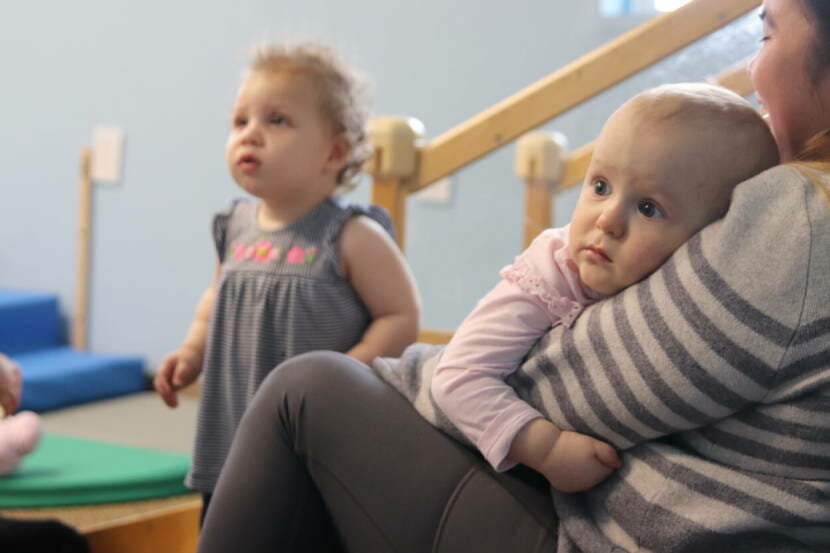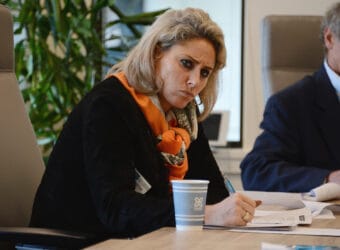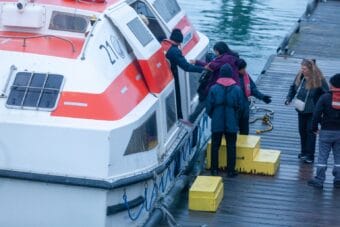
Last year, KCAW sat down with parents and child care providers to discuss the shortage of child care in Sitka. They said that child care is incredibly expensive, there aren’t a lot of local options for working parents, and with high overhead, centers can’t afford to pay teachers competitively, so staff turnover is high.
That was just weeks before the coronavirus pandemic shook things up for child care across the country.
“I think it was kind of scary in the beginning, because you weren’t sure where the money was going to come from,” Lolly Miller said in an interview last month. She directs the Sheldon Jackson Child Care Center. She said early in the pandemic, when health mandates forced centers to close, they didn’t know if they were going to make it.
“There’s not a lot of money in child care,” she said. “For some facilities, it’s a month to month kind of operation. There’s not a lot of extra money sitting around to carry you over for very long. That part was scary, you know, not knowing if we would have enough money, you know, to keep the doors open.”
But eventually some money did come. Grants and temporary relief money, including a chunk of the city’s CARES Act funds, helped keep them afloat during the pandemic.
But now Miller is running into a new problem. She’s only open at half-capacity. It’s been that way for months. And parents are desperate to get their kids in the door.
“I’ve had people cry in my waiting area,” she said. “It’s the worst part of this whole thing is carrying the burden of a lot of these people around you. I can’t even walk downtown. ‘Do you got room? Do you?’ I don’t even go downtown. You know, they’re desperate.”
With parents going back to work, she needs to open back up fully. But she’s short-staffed and said she’s on the verge of closing if she loses any more teachers.
“We do not have the staff to be able to operate and nobody is applying for jobs,” she said. “And we have tried, it’s been on social media. Mine’s been in the newspaper, every parent I talk with, who’s calling in looking for child care, I’m like, if you know anybody, send them our way.”
Just down the street, Erika Apathy runs the Betty Eliason Child Care Center, where they’ve had to cut back for the same reason.
“We actually had to very drastically decrease our program hours for our school age kids, because we don’t have staff,” she said. “And so I had to tell parents, ‘I’m sorry, I can only have your kids here from 7:30 to 12:30.’ Because if I have them here all day, it can impact our license, and we can get shut down because we’re not in compliance with it.”
Providers in Sitka aren’t the only ones that are reporting challenges as the state begins to emerge from the pandemic. In March, the state’s Child Care Program Office surveyed 420 child care providers, including home daycares. 87 percent said they were concerned about their operational status changing. Most said financial needs were the top concern, and while in Sitka there are waiting lists for child care, enrollment is actually down statewide.
Jenni Pollard works for thread Alaska, a statewide child care advocacy organization. She says the staffing problem isn’t new.
“You know, recruiting and retaining early, early childhood workforce has has been an issue prior to COVID and remains an issue today, especially in smaller communities,” she said. “This is a workforce that does valuable work, but has an average hourly salary of about $12 an hour, and many of them work without any insurance or benefits.”
Pollard said the low pay is the biggest deterrent, but a competitive hiring market is making it harder than usual to find staff. But higher pay means increased tuition for parents, and tuition is already high to cover operations. But most centers want to pay their staff more.
“We’re hearing the primary support needed is for staff to help with wages and bonuses, incentives for recruitment and retention and even professional development,” Pollard said.
In their responses to the state survey, nearly 60 percent of child care providers said they needed funding for salary increases and bonuses in order to retain staff. 47% said they needed incentives for recruitment and retention.
Some help is on its way. The state is now trying to determine how it will spend federal funds from the CARES and American Rescue Plan Acts — nearly $92 million dollars total — allocated for child care.
While it’s still not clear exactly how the money will be doled out, both Miller and Apathy are hopeful it will come through this fall and help carry them through the winter. But still, Miller said the funding is a stop-gap, so she hopes people will begin to advocate for more long-term solutions, locally.
“For our community right now, if they want their people working, and if they want a viable, you know, economy here in Sitka, somebody is gonna have to start brainstorming and helping us out on how we can get employees in our building,” she said.
Miller said child care is critical infrastructure, and only when Americans recognize it as that will the problems within the industry be solved.



